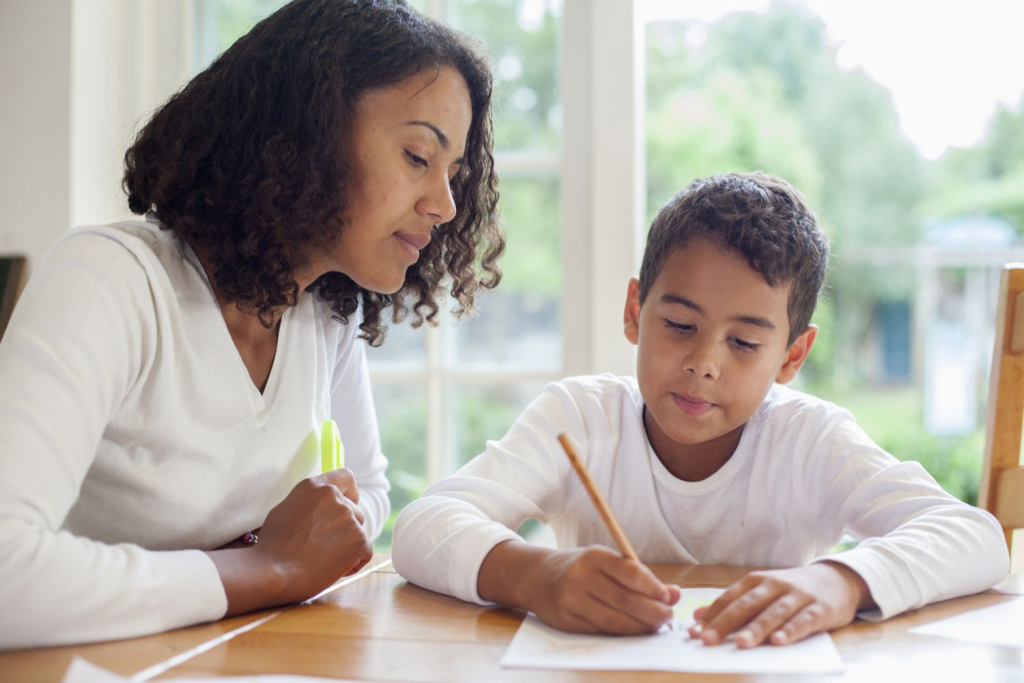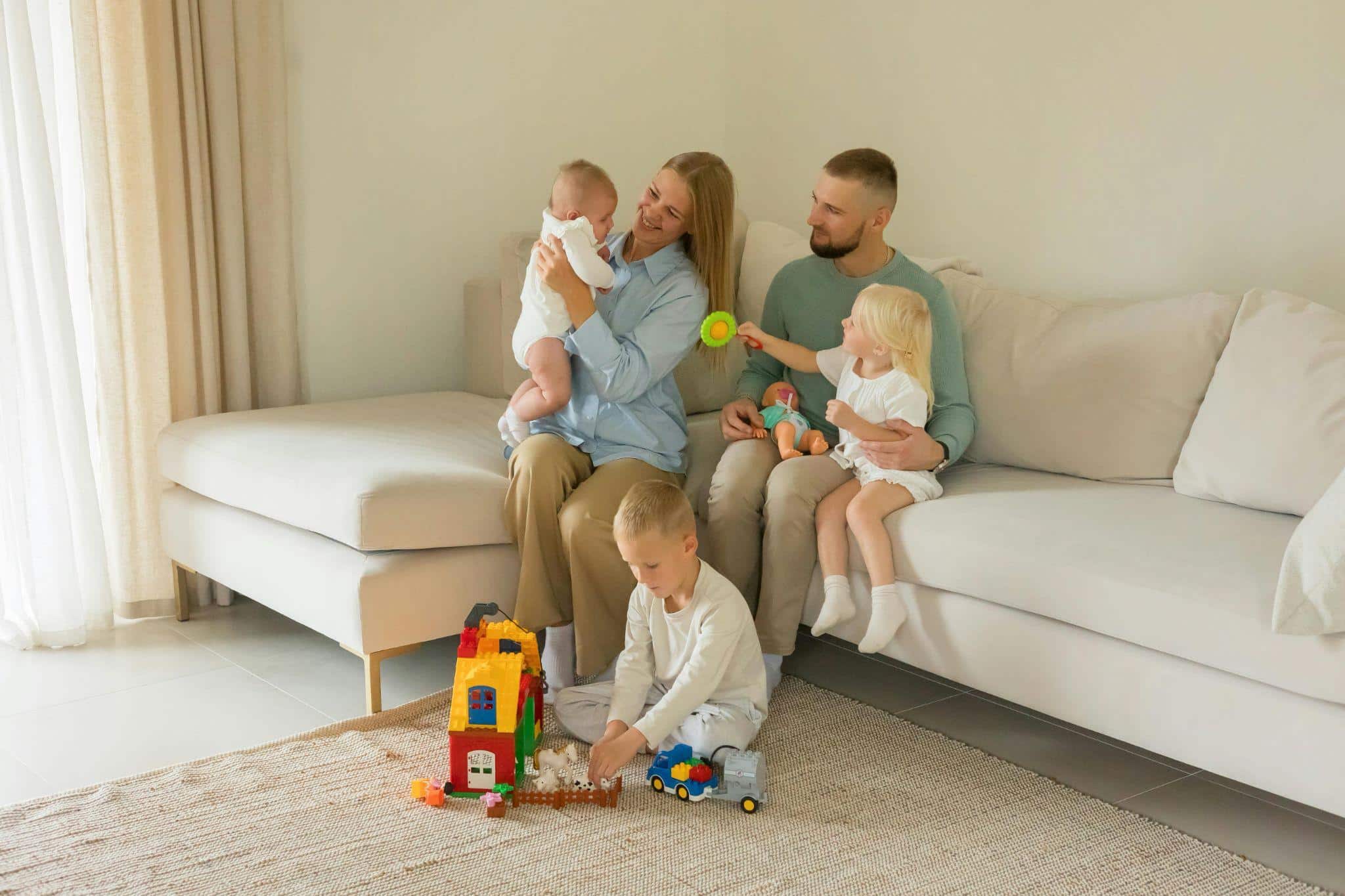Simple Practices in Behaviour Support That Families Can Apply at Home
Picture this: it’s already the fourth time you’ve asked your kid to put shoes on, it’s 7:43 AM, they’re now crying about socks feeling weird, and you’re doing mental math on how late you’re going to be. Sounds about right? Most of us go through some version of this circus daily, wondering if we’re screwing it all up or somehow making things worse. Here’s what helped me reframe everything, though.
These moments aren’t about your child being a tiny tyrant or failing at Parenting 101. What’s actually going on is communication, just not the neat, verbal kind that works best for adults. Kids often lack the words for what they’re feeling or needing, so their behaviour becomes a megaphone. Once you make that shift in understanding, it really changes the way you respond to pretty much everything and helps you build skills that will still serve them well when the toddler years are far behind them.
Understanding Why Behaviour Happens
Right, so here’s something that completely changed how I look at my kid’s meltdowns. They’re not lying in bed at night plotting ways to ruin your morning coffee. I know, I know, it absolutely feels that way during meltdown number five before lunch even happens.
But behind every behaviour, there’s often a real reason lurking even the ones that seem utterly bonkers from where you’re standing. Maybe they’re avoiding something uncomfortable, like that scratchy jumper you want them to wear. Maybe they’re desperate for your attention after you’ve been glued to work emails all morning. Or sometimes, they genuinely can’t find words for what’s happening inside their body and brain.
Everything changes when you stop thinking, “How do I shut this down immediately?” and get curious, “What’s my kid actually trying to tell me right now?” You’re not giving them a free pass to destroy the house or hit their sibling. You’re digging deeper into the message underneath the chaos.
And once you crack that code, you can finally address the real problem instead of playing behaviour whack-a-mole all day long. When you identify whether they’re seeking attention, avoiding something challenging, or trying to regulate their sensory system, you can teach them better ways to meet that same need. That’s where lasting change lives, not in punishments but in understanding what’s driving everything.
Establish Predictable Routines
Think back to the last time your whole day got completely derailed without warning. Felt pretty rubbish, yeah? Anxious, off-kilter, like you couldn’t quite get your footing back. Now imagine that’s basically your default state because you’re five and have zero clue what’s happening next, ever.
For kids, life without some kind of routine can feel like permanent uncertainty, which absolutely triggers challenging behaviour because their nervous system stays on high alert all day. This is exactly where positive behaviour support steps in and helps families create structure that stops problems before they even start. Knowing what happens after breakfast or before bed gives kids a bit of control in a world where grownups call pretty much all the shots.
Good news? Routines don’t have to be some sort of military-grade operation. Just a basic flow does wonders: wake up, breakfast, play, lunch, quiet time, outside time, dinner, bath, stories, lights out. Done. Some families love visual schedules where kids see pictures of what is next. You can make these with actual photos of your child doing each thing, which makes it super concrete for them.
When children know what is coming, they relax. They can prepare themselves for transitions instead of being constantly ambushed by change. Plus, you’ll dodge approximately three hundred “What are we doing now?” questions daily. Routines work magic for everyone, not just the kids. You spend less mental energy deciding what happens next, and children gain independence as they learn to anticipate and prepare for each part of their day.
Use Clear and Positive Language

Alright, try this experiment real quick. Don’t think about a purple giraffe wearing sunglasses. What just popped into your head? Exactly. That’s how our brains handle negative commands, and kids’ brains do this even more dramatically because their executive function is still under construction. So they’ve got to picture the thing first before even attempting to process the “don’t” part layered on top.
When you say, “Stop running,” your child’s brain immediately pictures running before trying to understand they should stop doing it. A bit confusing, yeah? Flip your language around instead. Try “walking feet, please” or just “walk”.
You’re painting a clear picture of exactly what you want. “Use your inside voice” absolutely beats “don’t yell” every time. This isn’t just semantic games either. You’re giving proper direction about what success actually looks like, making it way easier for kids to nail what you’re asking. They’re not left playing guessing games about what the opposite of the unwanted behaviour might be.
Positive language also sets a calmer vibe for the whole interaction because you’re guiding them forward rather than criticising what they’re doing right now. Over time, this cuts down defensiveness and boosts cooperation because children don’t feel like they’re getting corrected every three seconds.
Catch Them Being Good
We’re essentially hardwired to identify problems in the blink of an eye.Your child spills water and zoom, you’re right on it. But what about the seventeen times today they shared nicely, cleaned up without being asked, or used gentle hands with the dog? Those moments likely flew by without comment. Major missed opportunities there, because kids absolutely do more of whatever gets their attention.
Start actively hunting for moments when your child makes solid choices. “I noticed you helped your sister reach that toy. Really kind of you.” Or even just “Cheers for putting your bowl in the sink without being asked.” Get specific about what they did right.
Research consistently shows that positive attention makes kids way more likely to repeat those exact behaviours. You’re literally sculpting tomorrow’s choices by what you spotlight today. Timing matters, too. Catch them in the act or immediately after, so the connection is crystal clear in their brain.
Generic stuff like “good job” doesn’t land nearly as well as specific callouts that tell them precisely what they nailed. This also strengthens your whole relationship because children feel genuinely seen and valued for who they are, not just nagged about what they’re doing wrong.
Build in Sensory Breaks
Kids weren’t designed to function like miniature office workers who sit still and focus for hours. Their bodies need movement. Their sensory systems literally scream for input. When those needs stack up unmet throughout the day, behaviour unravels fast. You’ve probably clocked this pattern where your child gets increasingly squirrelly or stroppy as hours tick by without physical activity.
Don’t wait until things explode before addressing this. Weave breaks right into your regular rhythm before anyone hits breaking point. Ten minutes bouncing on the trampoline.
Squishing playdough. Full-on dance party to their favourite song. A quiet nest with cushions and books for decompressing. Every kid’s wired differently, too. Some need intense physical input to feel regulated-what therapists call proprioceptive feedback that helps them understand where their body exists in space. Others need calming, gentle stuff like deep pressure or quiet activities.
Suss out what actually helps your specific child settle, then carve out daily space for it. You might spot patterns emerging, like needing movement breaks after sitting activities or calm breaks following exciting ones. You’ll head off loads of meltdowns this way, and as a bonus, you’re teaching your child to recognise their own sensory needs and find healthy ways to meet them. That’s a skill they’ll carry into adulthood.
Offer Choices Within Limits
Nobody likes feeling utterly helpless, and this goes for kids whose lives are already pretty much dictated by grown-ups. When they feel as though they do not have a say in anything whatsoever, they usually act out quite strongly. It is essentially their way of declaring, “I am a real person, and my wishes count in this.” The need for self-governance in them is developmentally normal and actually healthy, though dealing with it can utterly exhaust parents.
The fix is pretty straightforward, though. Offer choices you’re genuinely okay with either way: “Want your striped shirt or the plain one?” “Fancy playing outside or doing puzzles after snack?” See what’s happening there? You’re not asking if they want to get dressed or have quiet time.
Those things are locked in regardless. But within that framework, they get real decision-making power. This slashes power struggles dramatically because kids feel respected and heard. When they have had some input into how things go down, they are way more likely to cooperate with the bigger plan.
The choices don’t need to be monumental either. Even tiny ones like which fruit with lunch or which story first help children feel agency. You’re also building decision-making skills every single time you offer a choice. Just make absolutely certain both options work for you, or you’ll end up in a power struggle anyway when they pick the one you were secretly hoping they’d avoid.
Remain Calm in Difficult Moments
Your emotional state is transmitted to your child faster than spilt cordial across a clean floor. When they’re already losing it and you respond by losing it too, you’re basically chucking petrol on an already-hot fire.
Of course, I totally get it. Maintaining calm when your kid’s having a complete breakdown over the wrong coloured plate demands patience most humans don’t naturally possess. But your child’s brain is literally scanning your brain for cues about whether this situation is actually dangerous or manageable.
Watch what happens when you somehow manage to stay level. You become this solid anchor your child can grab onto while their emotional storm rages. Take a breath, even if you need to physically step away briefly. Drop your voice low and soft. Consciously relax your face and shoulders. You’re doing two critical things at once: de-escalating what’s happening right now, sure, but also modelling exactly how to handle overwhelming feelings.
Your child is downloading lessons about emotional regulation as she watches how you manage your own reactions when things get properly tough. That teaching sticks around. When you stay calm, you’re showing that big feelings are manageable, not dangerous, and that they can be worked through without falling apart.
Over time, children internalise this regulation capacity by repeatedly experiencing co-regulation with steady adults. It’s like you’re lending them your calm until they can build their own reserves. Some days you absolutely won’t manage it, and that’s genuinely okay. Repair matters more than perfection, so circle back when everyone’s settled and acknowledge your own struggle with big emotions.
Use Natural Consequences
Kids take in infinitely more from actual consequences than any lecture you can give them. Natural consequences allow reality to handle the teaching. Child refuses a jacket? They feel cold outside.
Won’t eat their dinner? They’re hungry before breakfast rocks up. The consequence is simply the natural flow of their decision without any adult intervention or added-in anger layered on top, which means there’s nobody to blame but themselves and zero relationship damage from punishment.
The trick is knowing when it’s genuinely safe to let consequences unfold naturally. You’re obviously not letting your toddler learn about traffic through lived experience.
But everyday situations offer heaps of safe teaching moments. Natural consequences work brilliantly because they happen without you getting angry or trotting out “I told you so” commentary. Your child connects the dots themselves between what they chose and what followed.
The hardest part for parents is often stepping back and allowing the consequence to happen instead of swooping in to rescue or cushion every uncomfortable experience. But discomfort frequently teaches best. When your child forgets their lunchbox and has to eat whatever the school offers as backup, they’re way more likely to remember it tomorrow than if you’d rushed it to school for them.
You’re building responsibility and problem-solving capacity by letting them experience outcomes in relatively low-stakes situations. Save your interventions for genuinely high-stakes moments, and let natural consequences teach everywhere else.
Be Consistent Across Carers
Mixed signals from various adults create confusion; confused kids are much more likely to act out because they never really know where the boundaries lie. When rules shape-shift depending on who’s supervising or what kind of day the grownups are having, children end up constantly testing to suss out what’s real versus what’s flexible.
Get everyone who regularly cares for the kids singing from the same songbook. Both parents, grandparents, babysitters – the whole crew. Talk through common scenarios and hammer out agreed approaches to handle them. If jumping on furniture flies at one house but gets shut down at another, you’re engineering conflict before it even starts.
Being consistent doesn’t mean you can never adapt or show flexibility when life demands it. But your core expectations and typical responses should hold fairly stable. That stability creates security, and secure kids generally cooperate better. You might find it helpful to actually write down your main rules and approaches so everyone can reference them. When carers disagree about something, sort it out away from your child, then present a united front. Kids are incredibly perceptive and will absolutely exploit any gaps between carers if those gaps exist.
Conclusion
Supporting your child through rough behaviour patches doesn’t require perfection or fancy qualifications. What it actually requires is understanding, patience on really rubbish days and some practical strategies that work in real life, rather than just in theory.
Everything we’ve covered here – the routines, staying level, spotting good behaviour, offering choices – it all weaves together, creating an environment where positive behaviour becomes everyone’s easier path. Will every day run smoothly? Not even slightly. You’ll absolutely lose your temper sometimes.
Your child will still have epic meltdowns over seemingly nothing. Carefully constructed plans will spectacularly implode. That’s just standard family life operating procedure. What genuinely counts is the overall pattern you’re building and your willingness to keep showing up and trying, even when yesterday was a complete disaster.
These practices gradually become more automatic, almost second nature. The payoff’s legitimately worth it, though: calmer days, significantly less constant conflict, and a child who’s genuinely developing emotional skills they’ll lean on throughout life. Start with one or two strategies that feel actually doable, and build from there. Maybe kick off with weaving sensory breaks into your day or shifting towards positive language.
Small changes stack up over time. Trust your instincts, stay curious about what your specific child needs, and remember that building these skills demands time for everyone involved. You’ve absolutely got this.








